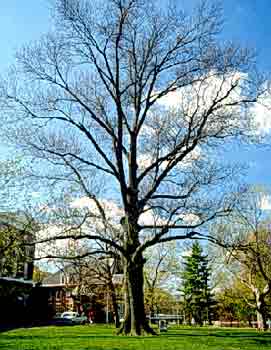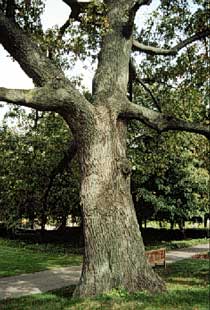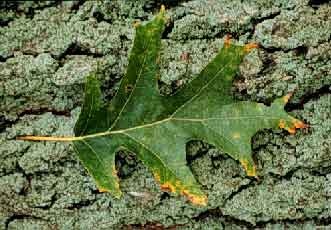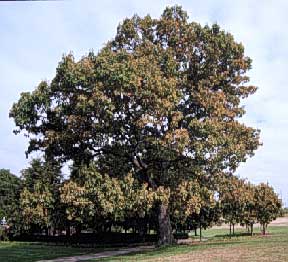 Black Oak - Quercus velutina
Black Oak - Quercus velutina
Beech Family (Fagaceae)
- Native habitat: Central and eastern North America in poor, dry soils.
- Growth habit: Black oak has a variable, irregular form and may look unruly.
- Tree size: This tree usually grows to a height of 50 to 60 feet.
- Flower and fruit: Female flowers are inconspicuous; male catkins are pendulous. The ½- to 3/4-inch acorn is coated with rust-colored down and the top half is enclosed in a cap.
- Leaf: Foliage is glossy green in summer. Leaves have seven to nine lobes with sharp tips. Fall color ranges from dull red to orange-brown.
- Hardiness: Winter hardy to USDA Zone 3.
 Additional information:
Additional information:The black oak is a stately oak that was introduced to commerce as early as 1800. It can reach a height of more than 100 feet. Co-national champion trees are in Michigan (131 feet) and Connecticut (84 feet).
The very prominent tap root of black oak ensures this species' survival under poor growing conditions. However, the black oak is not as common in the nursery trade because it can be difficult to transplant.
Like other tree species, oaks can suffer where construction means a change in the grade around the root system of the tree. The black oak's common name refers to its nearly black bark. This oak's inner bark, however, is yellow or deep orange and is used to make a yellow dye called quercitron.
 Although the native black oak is most frequently found in dry, poor areas, it prefers rich soil. Its seedlings, however, will not survive in shade so the black oak is often relegated to poor soils in native areas.
Although the native black oak is most frequently found in dry, poor areas, it prefers rich soil. Its seedlings, however, will not survive in shade so the black oak is often relegated to poor soils in native areas.
The specific epithet, velutina, is derived from the Latin word for fleece, wool or down, vellus, which refers to this species' velvety winter buds and young foliage.


